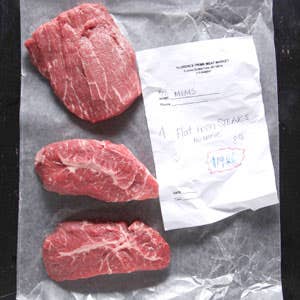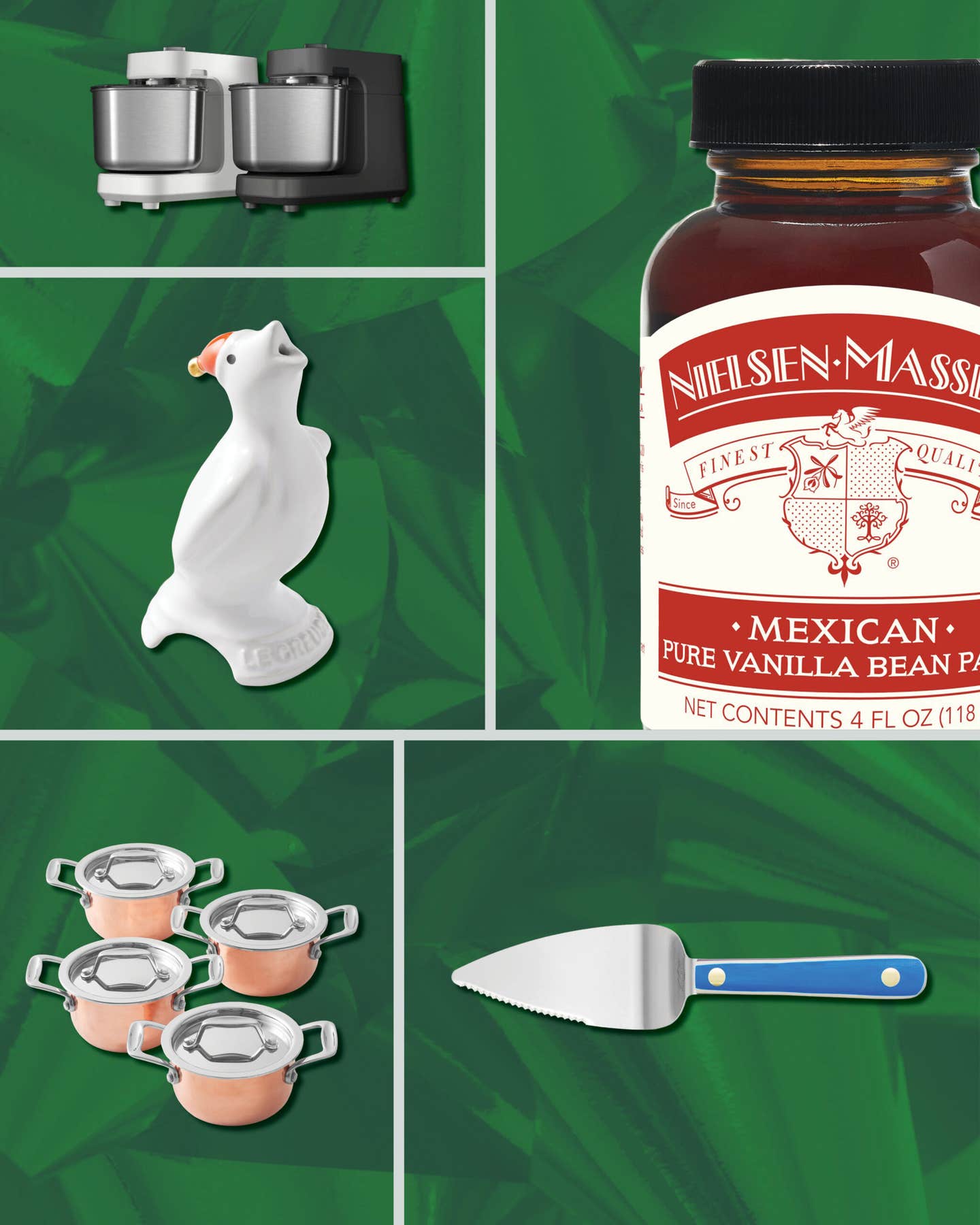
Not all beefsteaks are created equal. The most sought after cuts—porterhouse, strip, filet mignon, and rib eye—command high prices thanks in large part to their tenderness. They come from the middle meats of the steer, otherwise known as the rib and the loin. Cuts that fall into the categories of chuck and round come from the steer's shoulder and rump, which get more exercise and are therefore tougher; they've traditionally been reserved for use in hamburger, braised dishes, and stews. In the past few years, however, a steak cut from the shoulder clod section of the chuck has gained prominence on the menus of restaurants as varied as New York City's Gramercy Tavern and Marlow & Sons and the nationwide Sizzler steak house chain. Called the flat iron, this cut is in fact the second-tenderest steak after the filet mignon.
So named because, when cut in the traditional way, it resembles a clothes iron in shape, the flat iron has actually been around for a long time. (Aliases include chicken steak and top blade steak.) No one paid much attention, though, because a tough strip of connective tissue ran down its center, making it unappealing to many steak lovers. That's where Chris Calkins, a University of Nebraska professor of animal science, enters the story. In the late 1990s he came across data showing that a steady rise in the price of the middle meats had been accompanied by a dramatic drop in the price of chuck. "The question was 'How do we add value back to the chuck?'" says Calkins. He helped put together a joint research project between the University of Nebraska and the University of Florida that measured different portions of the chuck for palatability and tenderness. They determined that the tenderest portion of all was a muscle found in the shoulder clod called the top blade.
The problem was that when the top blade was cut crosswise, as it always had been, to create a flat iron steak, that seam of connective tissue was left intact. Working with meat processors, the researchers developed a way of cutting the muscle lengthwise into two halves free of connective tissue and further dividing those into rectangular steaks of six to 12 ounces. The result? In 2007 there were more than 92 million pounds of the new, improved flat iron steak sold to restaurants, where there had been virtually no sales before. "It's a win-win," says Calkins. "You get a good steak-eating experience at a price both the customer and the restaurant can afford."
Keep Reading
Continue to Next Story










